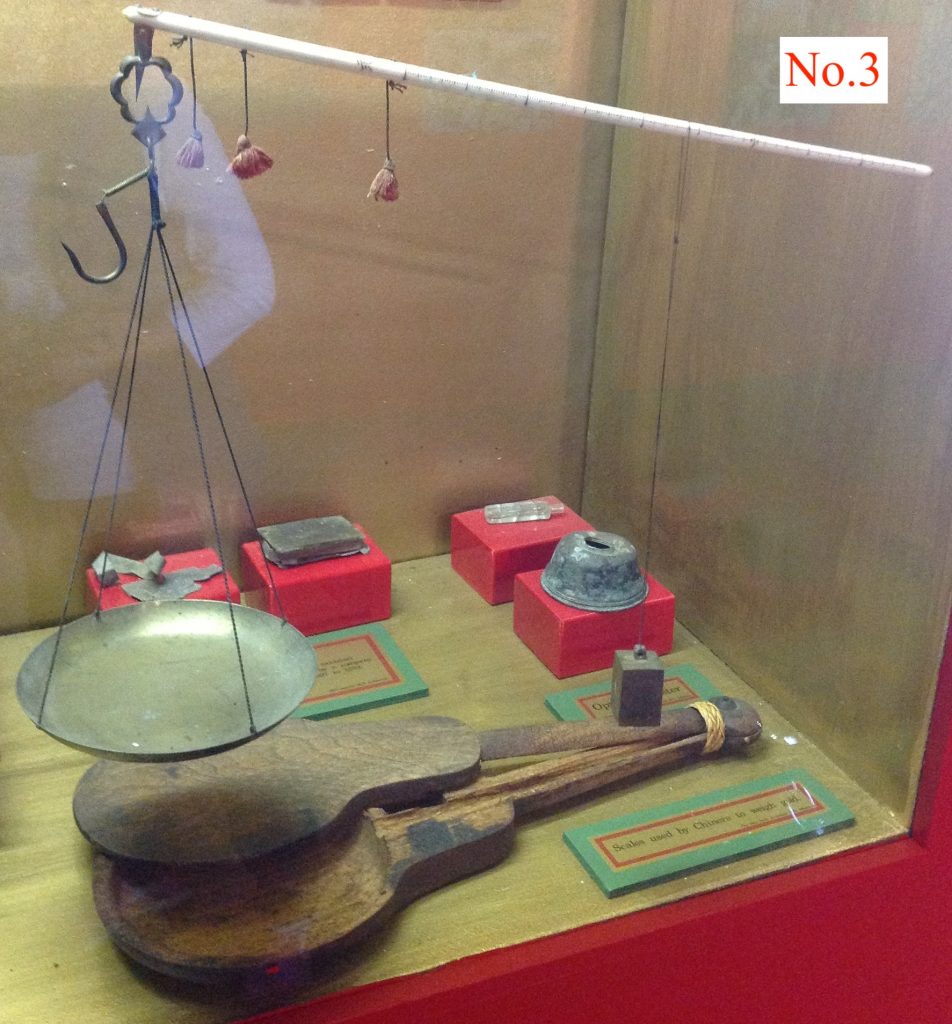
Scales such as these are common in museums throughout Australia and just as common is their labelling as gold, opium or less often as medicine scales depending on the whim of the curator (see No.64). Those pictured here are in the McCrossin’s Mill Museum at Uralla in northern NSW and are marked as used for gold. But of course they are simply scales useful for weighing anything and their use for gold, opium, herbs or boiled lollies depends entirely on the owner.
That such scales of Chinese origin are mostly labelled either ‘opium scales’ or ‘gold scales’ reflects more about the labellers’ preconceptions of Chinese people in Australia than any use the individual scales may have been put to. That Chinese people came to Australia for gold and that they smoked opium are two characteristics most ‘known’ and the labelling of scales for either or both purposes re-enforces this ‘knowledge’.
Not that both goldmining and opium smoking were not participated in by Chinese people. Just as Chinese Australians ran shops, grew tobacco, drank tea and participated in many other aspects of Australian society. Gold and opium have come to dominate the popular historical image of Chinese in Australia to such an extent that it tends to crowd out other aspects of Chinese-Australian history. The main period of gold seeking as far as Chinese people in Australia was concerned ran from the early 1850s to the late 1870s. Opium was a legal import into the colonies and Australia (subject to duty) until 1906 and its use for medicinal purposes by Chinese and European medical practitioners was widespread. (See No. 24)
Tin mining attracted large numbers of Chinese miners, as it did Europeans, while Chinese Australians worked in most industries until restrictive immigration laws after the 1880s helped to limit their range so that market gardening and cabinet making became known as ‘Chinese’ occupations. Opium smoking, along with gambling were also considered ‘Chinese vices’, though often because Europeans participating in either or both generated antagonism from those who had appointed themselves protectors of [European] community morals.


I have recently bought an opium scale with a bone beam. It is calibrated with dots. It has two times five spaces. After some work I have tested it as 120 grain x 2. I believe this may be made to weigh dwt . It could weigh up to 10 dwt.
Hi Tony,
What makes you think it is an opuim scale as opposed to simply a scale that might have been used for many things? If you read the article you will see that this is the question.
Cheers,
Michael
I have 2 of this type scales made in Japan, these are calibrated in mommes and grams. They both test correct for zero and span.
This one I believe is Chinese. As I said the span seems to be 120 grains divided into 5. This gives 5 x 24 which is 5 dwt. I wondered where this had been made. Could it be a local adaptation .
I have 95 scales and more than 100 weight sets and singles. I find it interesting when it appears that metric, troy and avoirdupois jockied for position in the 1870’s.
As you said people made up their own uses. I have 2 Avoir bell weight with copper soldered on the bottom to try and make then Troy values. There is much more to learn. Cheers
Tony